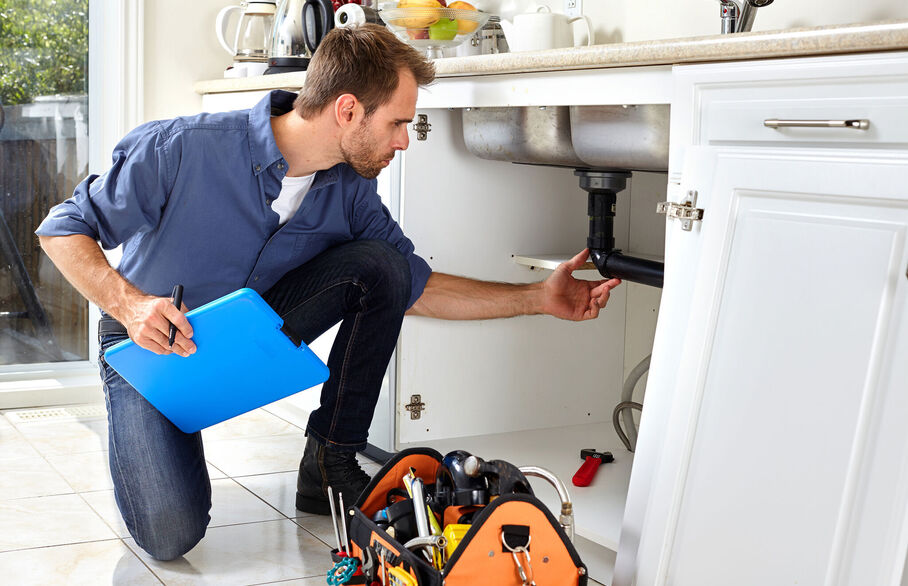Immediate Solutions for Plumbing Issues in Rental Properties
Immediate Solutions for Plumbing Issues in Rental Properties
Blog Article
This article below pertaining to 10 Common Rental Property Repairs is totally fascinating. Read on and make your own ideas.

Managing pipes issues in rental properties effectively is critical for preserving lessee complete satisfaction and protecting the residential or commercial property's worth. Whether you're a landlord or a home supervisor, recognizing how to attend to these usual problems can conserve you money and time while ensuring compliance with lawful duties. Here's a step-by-step guide on exactly how to manage pipes issues in rental residential or commercial properties.
Paper Every little thing
Maintain comprehensive documents of all reported plumbing issues and the actions required to settle them. Documents should include dates, descriptions of the problem, communication with renters, and receipts from contractors or plumbing professionals. This details can be critical for insurance coverage claims, tax deductions, and legal protection.
Use Qualified Professionals
Always use accredited and insured specialists for substantial pipes repair services and installments. This makes sure that the job is up to code and can assist prevent liability issues in case of accidents or further damages. It additionally guarantees occupants that repair services are being managed expertly.
Establish Clear Communication
Encourage tenants to report any kind of pipes problems as soon as they occur. Give numerous communication channels such as phone, e-mail, or a renter portal to make it very easy for them to connect. Trigger responses to these records can protect against minor issues from escalating right into significant issues.
Educate Lessees
Enlighten your occupants regarding what constitutes a pipes emergency and what does not. Provide standards on exactly how to handle small problems themselves, such as using a bettor to unclog a commode. Likewise, inform them concerning what they must avoid taking down drains to stop obstructions, such as grease, coffee premises, and non-biodegradable products.
Regular Upkeep
Implement a regular maintenance timetable for all plumbing systems in your service homes. Regular checks can assist identify and solve issues like leakages, slow drains pipes, or corroded pipelines before they end up being major. Take into consideration hiring a specialist plumbing to evaluate the homes each year or semi-annually.
Quick Reaction to Emergency Situations
Have a plan in position for replying to plumbing emergency situations. This should include having the call information of reputable pipes services that use 24/7 emergency situation repairs. Quick activity is essential to lessen damages in situations like burst pipelines or extreme leaks.
Preventive Upgrades
Think about updating older pipes systems and components to much more contemporary, reliable versions. This can decrease the frequency and intensity of pipes issues and lower long-lasting upkeep prices. It's additionally a selling point for prospective lessees that value upgrades and modern features.
Renter Move-Out Inspections
Conduct detailed pipes checks throughout move-out inspections to guarantee that any type of problems are recognized and resolved prior to a brand-new lessee relocate. This prevents disputes with new tenants over pre-existing conditions and makes sure the building remains in leading problem.
Understand Lawful Duties
Recognize your lawful duties relating to pipes and general residential property upkeep. A lot of jurisdictions need property owners to ensure their residential or commercial properties are habitable and that all plumbing systems remain in good working order. Failing to attend to significant concerns immediately can cause legal actions from tenants.
Tenant Repayments
If a pipes problem needs immediate focus and the lessee solves the problem on their own, have a clear plan in position for repaying costs. Ensure renters know they ought to acquire previous authorization for higher-cost repairs unless it's an absolute emergency.
Conclusion
Dealing with plumbing issues in rental homes needs a positive technique and great communication with renters. By staying on top of maintenance, responding promptly to emergencies, and using professional professionals, property managers can maintain their residential properties in exceptional condition and maintain excellent partnerships with lessees.
How to Handle Water Damage in a Rental Property
What is Water Damage?
Water damage is harm or destruction caused by water entering areas where it is not supposed to be. It can be caused by a variety of sources and can manifest in different ways. The most common examples of water damage include:
Leaking roof Plumbing leaks Appliance malfunctions Poor drainage Flooding Sewage backup Condensation Tenant negligence HVAC system issues Frozen pipes Is water damage dangerous?
Water damage itself is not inherently dangerous, but it can lead to various hazards and health risks if not promptly and properly addressed. The severity of these risks depends on the extent of the water damage, the source of the water, and how quickly it is mitigated.
Some potential dangers associated with water damage include structural damage, mold and bacterial growth, electrical hazards, water contamination, and pest infestations. In situations where mold and mildew have gone unaddressed, mold can start to develop within 24-48 hours of water exposure, and this can impose a serious health risk to tenants. In particular, mold spores and damp conditions can lead to respiratory issues and even make existing health problems worse, such as allergies, asthma, or immune disorders.
Water Damage in an Apartment - Who is Responsible?
If the water damage is caused by the tenant’s negligence, the tenant is responsible for the cost of repairs. If the water damage is caused by a defect in the property, the landlord is responsible for the cost of repairs. If the water damage is a result of natural causes, such as excessive rain, then the landlord is responsible, since the water intrusion likely occurred due to a defect in the property. Landlord Responsibility water damage in rental property
Since maintaining habitability is the landlord’s legal responsibility, landlords are responsible for any resulting structural damage caused by water damage. These structural damages may include damage to walls, roofs, ceilings, and flooring. If water damage has affected the rental property’s original structure, the landlord is responsible for repairing or replacing those materials. Therefore, landlords should have property insurance that covers the structural components of their rental property so that they can receive help with the costs of covered events.
Preventative measures can also help landlords avoid massive renovations. Preventative maintenance may include conducting regular inspections to identify and address potential water damage before it becomes a major and urgent problem.
If a landlord fails to meet their responsibilities regarding water damage, it can lead to legal disputes and potential liability. Tenants who believe their landlord is not addressing water damage issues in accordance with California law can seek legal advice or contact local housing authorities for assistance.
https://www.goodlifemgmt.com/blog/water-damage-in-a-rental-property/

Do you really like reading about 10 Common Rental Property Repairs? Write a remark further down. We'd be pleased to hear your thinking about this piece. We hope that you visit us again later on. Liked our blog entry? Please share it. Help another person check it out. I enjoy your readership.
Report this page